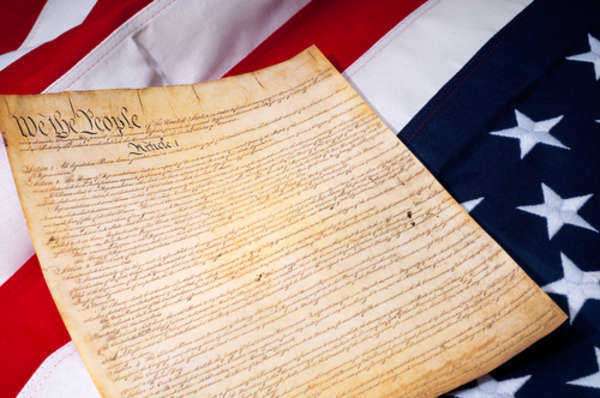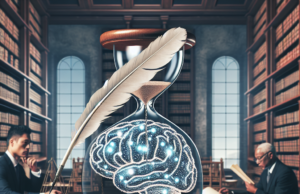Table of Contents
- 1 Article 1 Overview
- 1.1 The Structure of Article 1
- 1.2 Article 1: Section 1
- 1.3 Article 1: Section 2
- 1.4 Article 1: Section 3
- 1.5 Article 1: Section 4
- 1.6 Article 1: Section 5
- 1.7 Article 1: Section 6
- 1.8 Article 1: Section 7
- 1.9 Article 1: Section 8
- 1.10 Article 1: Section 9
- 1.11 Article 1: Section 10
- 1.12 Impact on The United States
- 2 What is Article 1 of the Constitution?
- 3 How is Article 1 Broken Down?
- 4 Section 1 of Article 1
- 5 Section 2 of Article 1
- 6 Section 3 of Article 1
- 7 Section 4 of Article 1
- 8 Section 5 of Article 1
- 9 Section 6 of Article 1
- 10 Section 7 of Article 1
- 11 Section 8 of Article 1
- 12 Section 9 of Article 1
- 13 Section 10 of Article 1

Article 1 Overview
Article 1 of the United States Constitution is the first of the seven articles that outline the governing structure of the country. This article is divided into ten sections, collectively known as the Legislative Branch. It establishes the framework and procedures for the legislative branch of the United States government, the Congress, which comprises the House of Representatives and the Senate.
The Structure of Article 1
The structure of Article 1 of the Constitution reflects both the ideas of the Founding Fathers and the compromise that was reached at the Constitutional Convention. The founders wanted a strong central government but also recognized the importance of individual state sovereignty. This led to the adoption of a bicameral legislature, with the House of Representatives representing the people and the Senate representing the states.
Article 1: Section 1
Section 1 of Article 1 states that “All legislative Powers herein granted shall be vested in a Congress of the United States, which shall consist of a Senate and House of Representatives.” This establishes the idea of a bicameral legislature and ensures that all power to create laws is held exclusively by the Congress.
The House of Representatives is composed of members elected every two years. The number of representatives is based on each state’s population, with each state guaranteed at least one representative. The size of the House of Representatives is determined by the Census, which is taken every ten years.
The Senate, on the other hand, is composed of two senators from each state, regardless of population. This ensures that each state has equal representation in the upper chamber of Congress.
Article 1: Section 2
Article 1, Section 2 of the Constitution outlines the qualifications for members of the House of Representatives, including age, citizenship, and residency. It also establishes that members of the House of Representatives are chosen by the people of each state.
Article 1: Section 3
Article 1, Section 3 of the Constitution outlines the qualifications for members of the Senate, including age, citizenship, and residency. It also establishes that the Vice President serves as the President of the Senate but can only vote in the case of a tie.
Article 1: Section 4
Article 1, Section 4 of the Constitution gives states the power to determine the “Times, Places, and Manner” of holding elections for members of Congress. This means that each state determines its own election laws, including how and when elections are held.
Article 1: Section 5
Article 1, Section 5 of the Constitution establishes the rules for how Congress operates, including the requirement that a quorum, or a majority of members, must be present to conduct business. It also allows each chamber to expel its own members with a two-thirds vote.
Article 1: Section 6
Article 1, Section 6 of the Constitution establishes that members of Congress receive a salary for their service but are not allowed to hold any other office while serving. This helps to ensure that members of Congress are not influenced by other political interests.
Article 1: Section 7
Article 1, Section 7 of the Constitution outlines the process for how a bill becomes a law. This process involves the introduction of a bill, its passage through both the House of Representatives and the Senate, and the President’s signature. If the President vetoes a bill, Congress can override the veto with a two-thirds vote in both chambers.
Article 1: Section 8
Article 1, Section 8 of the Constitution lists the powers granted to Congress, including the power to tax, regulate commerce, declare war, and establish post offices. These powers provide Congress with the ability to create laws that impact the daily lives of Americans.
Article 1: Section 9
Article 1, Section 9 of the Constitution outlines the limitations on Congress’ power. These limitations ensure that the government cannot become too powerful and encroach on individual rights. For example, Congress cannot pass bills of attainder, which punish individuals without a fair trial.
Article 1: Section 10
Lastly, Article 1, Section 10 of the Constitution outlines the limitations on the states’ power. The states are prohibited from engaging in a range of activities, such as making treaties with foreign countries or coining their own currency.
Impact on The United States
Overall, Article 1 of the United States Constitution has had a significant impact on the development of the United States government and its laws. One of the most significant impacts has been the establishment of a bicameral legislature, which provides equal representation for both the people and the states. This system has been replicated by many state governments across the United States.
Additionally, Article 1 has provided a framework for the development of laws that have impacted virtually every aspect of American society. From taxes to regulations on commerce to the drafting of a budget, many of the laws that govern the United States can be traced back to Article 1 of the Constitution.
One notable example of the influence of Article 1 is the passage of the Affordable Care Act (ACA), also known as “Obamacare.” The ACA, which was signed into law by President Barack Obama in 2010, included several provisions that could be traced back to Article 1. For example, the law included an individual mandate that required all Americans to have health insurance or pay a penalty. This mandate was based on Congress’ power under Article 1, Section 8 to regulate commerce.
The ACA also included a provision that allowed states to expand their Medicaid programs, which provide healthcare coverage to low-income Americans. This provision was based on Article 1, Section 8’s power to provide for the general welfare of the United States.
Another example of the influence of Article 1 is the development of state constitutions. Many of the 50 states have modeled their constitutions after the United States Constitution, including the establishment of a bicameral legislature and the division of power between the state and federal governments. This has helped to ensure that the principles of the United States Constitution are upheld at the state level.
In conclusion, Article 1 of the United States Constitution provides the foundation for the country’s legislative branch. It establishes the framework for the creation of laws that impact virtually every aspect of American society. This article has had a significant impact on the development of the United States government and its laws, and its influence will continue to be felt for generations to come.
What is Article 1 of the Constitution?
Article 1 of the U.S. Constitution gives Congress its powers and limits. Congress is the legislative branch of the government, meaning they are the ones to make laws for the United States of America. The article also creates the two sections of Congress, which is called a bicameral legislature. The first of the two is the Senate, which is made up of two senators from each state. The second is the House of Representatives, which has representatives from each state based on the population.
How is Article 1 Broken Down?
Article 1 of the U.S. Constitution has ten parts or sections. Within each section, the article is broken down even more into clauses.
Section 1 of Article 1
Section 1 of Article 1 is known as the vesting clause. This clause gives Congress the government’s power to make laws. There are similar vesting clauses in article two and article three, which give powers to the other branches of the government. This means no other branch is allowed to exercise the same power.
Section 2 of Article 1
Section 2 of Article 1 gives information about the United States House of Representatives. This part of Article 1 says that there will be elections for members of the House of Representatives every second year. These representatives are voted in by the people, meaning the citizens of each state will choose the representatives. Any representative who decides to run for a seat on the House of Representative’s bust be at 25 years old, and must have been an American citizen for at least 7 years. He or she must also live in the state that he or she wishes to be a representative for
Section 3 of Article 1
Section 3 of Article 1 describes explains how the Senate should be. This section says that there will be two Senators for each state, and they will have 6-year terms. In order to be a Senator, a person has to be at least 30 years old and must have been an American citizen for at least 9 years. He or she must also live in the state that he or she wishes to be a representative for
Section 4 of Article 1
Section 4 of Article 1 explains that the States have the power to determine where, when, and how elections will be held for Senators and Representatives. The section also states that Congress must meet at least once each year, and this meeting must be on the first Monday in December.
Section 5 of Article 1
Section 5 of Article 1 talks about how the procedure should be for each House of Congress. This includes the qualifications of members, the rules they must follow, how to keep records for what happens, and how a house can adjourn.
Section 6 of Article 1
Section 6 of Article 1 looks at the privileges, restrictions, and compensation of anyone who is a Senator or a Representative. These civil officers get paid by the Treasury of the United States. They cannot be arrested unless it is for a felony, treason, or a breach of peace. They also cannot take an office in the Executive government while they are still in Congress.
Section 7 of Article 1
Section 7 of the Article explains how Congress can make acts through bills. A bill can start in either the House of Representatives or in the Senate. Once the bill is passed in both houses, it can become a law. After it is passed, it will go to the president, who can let it pass or choose to veto the bill.
Section 8 of Article 1
Section 8 of Article 1 gives the Enumerated Powers of congress. The enumerated powers are a list of items that Confess is specifically allowed to do. Examples of these powers include making money or setting up taxes.
Section 9 of Article 1
Section 9 of Article 1 is a list of limits on the powers of Congress. For example, Congress cannot create any titles for royalty, like a King.
Section 10 of Article 1
Section 10 of Article 1 is the last section of Article 1. Section 10 limits the powers of the states. For example, the first part of section 10 says that states do not have certain powers that the federal government has. For example, they cannot create money.






















